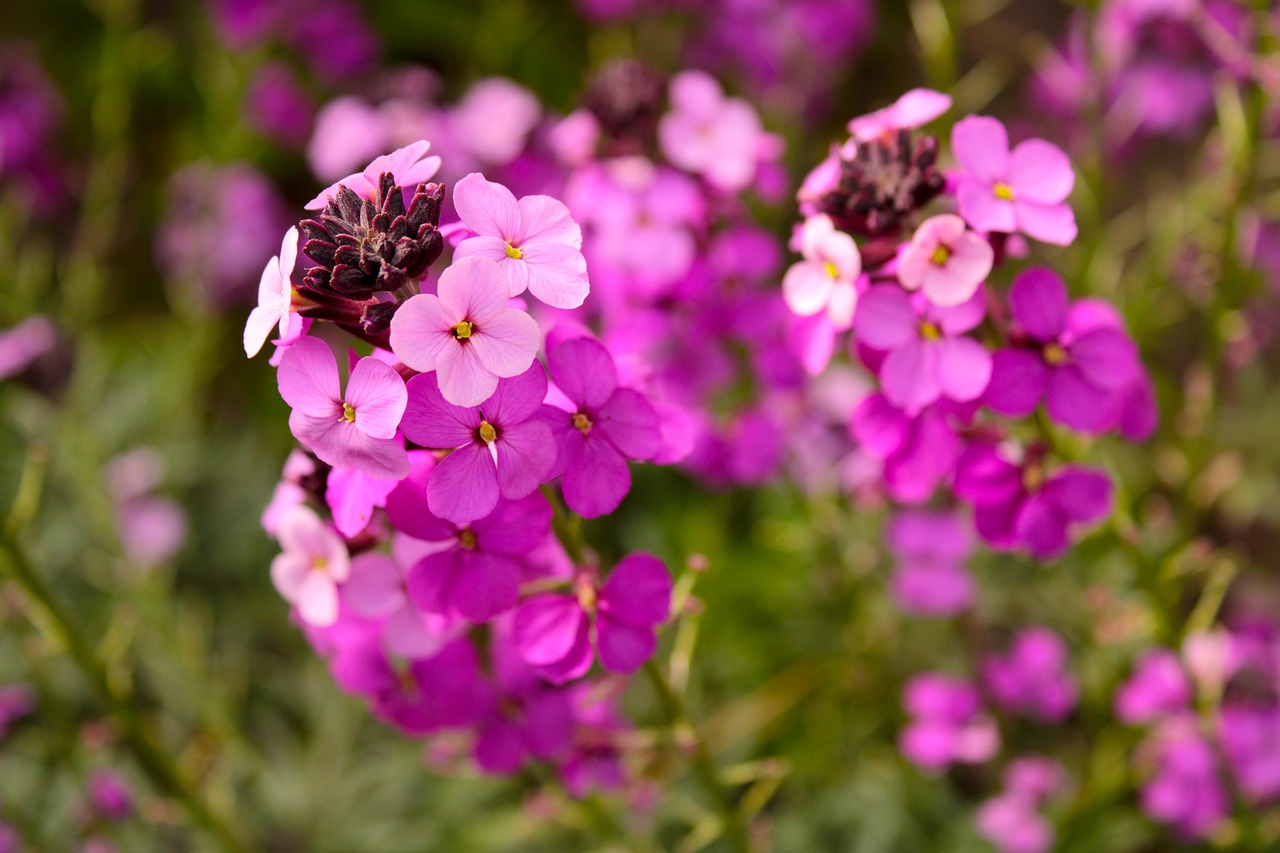Last Updated on April 8, 2024 by Real Men Sow
Wallflowers (Erysimum) are often grown as spring bedding plants, and they can be grown from seeds in the spring, then transplanted in the fall. You can also buy bare root wallflower plants for fall planting. They bloom in March and provide a pop of color where there isn’t much else. They look great with spring bulbs.
There are also perennial wallflowers that are available. They have been growing in popularity in recent years. Small gardens can benefit from varieties such as the ‘Bowles’s Mauve’ or ‘Winter Orchid’ which bloom almost continuously throughout the year. The perennial wallflowers provide an excellent source of nectar and can be a reliable source for pollinators for a long period.
How To Grow Wallflowers
Wallflowers can be grown in well-drained, moist soil that is in full sun or partial shade. Plant biennial wallflowers in the spring, and then plant them in autumn. After flowering, remove them and compost them.
Plant perennial wallflowers in May through September. To maintain a healthy appearance and encourage flowering, cut back regularly. To prevent losses, take cuttings often.
Best Place To Plant
Wallflowers thrive in sunny locations with well-drained soils but they can tolerate some shade. Bedding wallflowers (biennials) work well when they are planted with spring bulbs like tulips or daffodils. They can also be grown in containers. The best place to plant perennial wallflowers is towards the front of an ornamental border.
Growing Wallflowers From Seeds
You can usually grow bedding wallflowers from seeds. Plant the seed in late spring, and then continue to grow them until they are ready to be planted in autumn or next spring. Perennial varieties can only be grown from young plants. To aid drainage, it is a good idea to add some grit to your planting hole.
Proper Propagation
Wallflowers can be easily propagated. Biennial varieties can self-seed if they are given the right conditions. Some alpine wallflowers, which are mat-forming, can be divided. Although perennial wallflowers are not sterile, they can be propagated from cuttings.
How To Care For Wallflowers
As they begin to fade, trim flower stalks. Perennial wallflowers can withstand cold temperatures and brief periods of frost. They are not able to withstand windy and wet winters so ensure that the soil is well-drained.
Problems When Growing Wallflowers
Wallflowers belong to the brassica family, so they can be susceptible to club root or other diseases. Problems can be caused by leaf blight, downy mildew and flea beetles. Also, be aware of snail and slug damage to young plants.
Perennial wallflowers can be very short-lived, and they can become woody. It’s best to take cuttings every year to protect against potential losses.
Wallflower Varieties To Grow
Bedding Mixed’
Rich, fragrant blooms in a variety of colors including yellow and red appear starting in spring. To get the best results, sow in May in a nursery and then plant in autumn to flower in spring.
‘Apricot Delight’
Is a perennial wallflower and it’s evergreen, woody-stemmed, floriferous shrub. The tall, apricot-orange flowers are a magnet for butterflies and bees.
‘Sunset Purple’
Produces rich, fragrant purple flowers in spring and sometimes a second flush late in the summer. To get the best results, sow in May in a nursery and then plant in autumn for flowering in the spring.
‘Bowles’s Mauve’
Is a beautiful, floriferous and woody-stemmed perennial wallflower. It will produce masses of beautiful mauve flowers from tall spires. In warm, protected gardens, it will bloom all year.
Winter Orchid’
A perennial variety that blooms prolifically throughout the year and has sweetly scented flowers. They are a mixture of purple and orange flowers, which brightens up winter months with their cheerful blooms.


